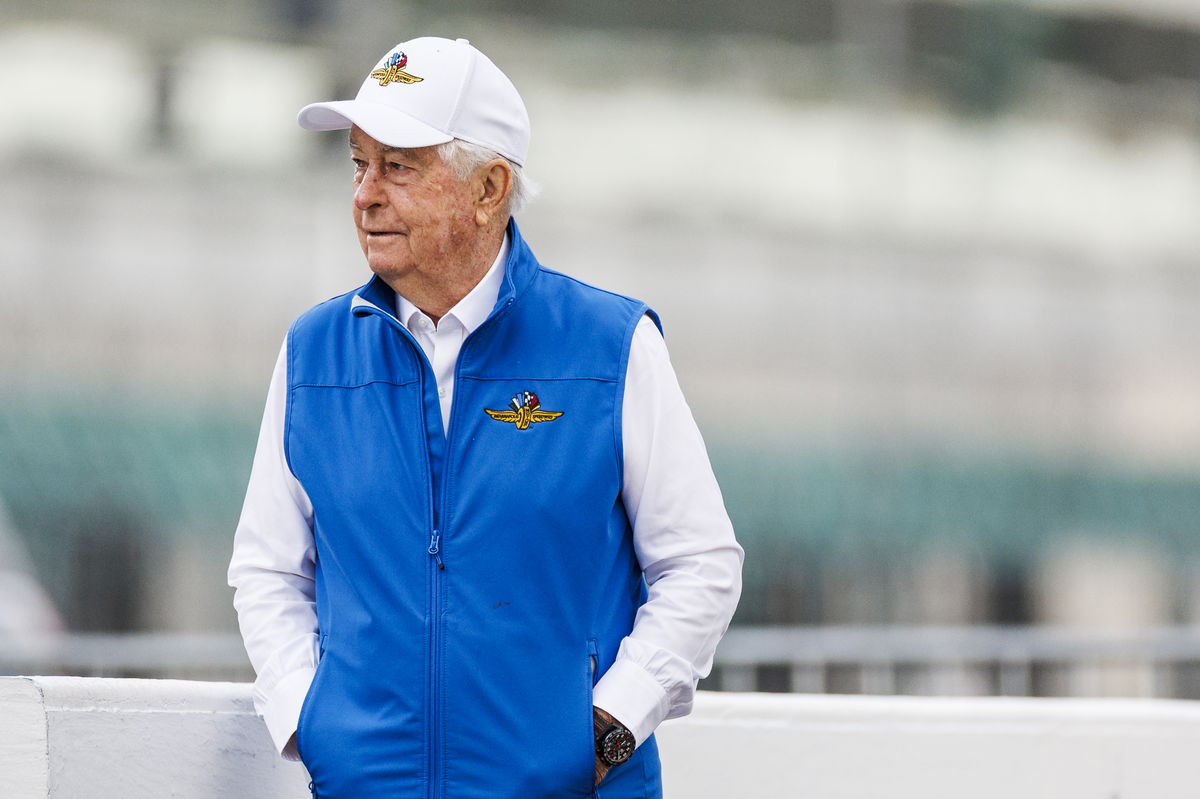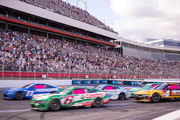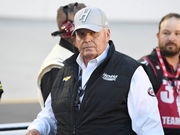
Getty
INDIANAPOLIS, INDIANA – MAY 27: Team owner, Roger Penske of Team Penske looks on during the 108th Indianapolis 500 champion’s portraits at Indianapolis Motor Speedway on May 27, 2024 in Indianapolis, Indiana. (Photo by James Gilbert/Getty Images)

Getty
INDIANAPOLIS, INDIANA – MAY 27: Team owner, Roger Penske of Team Penske looks on during the 108th Indianapolis 500 champion’s portraits at Indianapolis Motor Speedway on May 27, 2024 in Indianapolis, Indiana. (Photo by James Gilbert/Getty Images)
NASCAR and IndyCar might both be top-tier American motorsports, but they’re like cousins raised in different worlds. NASCAR’s all about stock cars, big, beefy machines built to bang fenders on ovals from short tracks like Bristol to massive superspeedways like Daytona.
Watch What’s Trending Now!
Born in 1948 under Bill France Sr., it’s got deep roots in Southern bootlegging and dirt racing, and it’s still the king of U.S. motorsports, especially in the Southeast. IndyCar, meanwhile, is open-wheel racing at its finest, with the Indianapolis 500 stealing the show since 1911.
The modern series came together in 2008 after CART and the Indy Racing League merged. IndyCar’s cars are lighter, faster, hitting 230 mph on superspeedways compared to NASCAR’s 200 mph, and they demand surgical precision on a schedule heavy with road and street courses. The two series feel worlds apart. NASCAR’s about drafting and roughhousing, IndyCar’s about finesse, but lately, folks are saying NASCAR could learn a thing or two from IndyCar’s playbook.
ADVERTISEMENT
With Roger Penske’s grip on IndyCar showing how to keep fans hooked, some are pointing to his success as a rebuttal to NASCAR’s obsession with playoff drama to keep the title race alive. IndyCar’s proving you don’t need a last-lap championship showdown to pack the stands or spike TV ratings.
NASCAR fans are tired of Playoff
Tobie Christie dropped a truth bomb on X: “For those who say that nobody would watch a #NASCAR season finale if the championship was already locked up before the race began… IndyCar had one of its most viewed races of the season with the title already locked up. Full season points. No excuses.” NASCAR’s old-school points system took heat for years because a driver could clinch the title early, supposedly killing fan interest in the finale.
ADVERTISEMENT
For those who say that nobody would watch a #NASCAR season finale if the championship was already locked up before the race began… IndyCar had one of its most viewed races of the season with the title already locked up. Full season points. No excuses. https://t.co/b0VfKmcrzl
— Toby Christie (@Toby_Christie) September 3, 2025
That’s been the excuse for the playoff format since 2004. But IndyCar’s 2025 season flipped that script. Alex Palou had the championship wrapped up before the Nashville finale, yet the race still pulled 1.14 million viewers on FOX, a 136% jump from last year’s NBC finale, peaking at 1.39 million in the closing laps. So much for the “nobody watches” argument.
ADVERTISEMENT
What made Nashville a hit wasn’t the title, it was the racing. Scott McLaughlin’s thrilling win, the buzz of a new downtown street course, and the energy of a fresh market kept fans glued. Even with Palou’s crown secured, there was plenty to care about: the fight for the race win, top-five points battles, and the vibe of an inaugural finale. It shows drama doesn’t need a points chase, great racing and good stories do the trick.
IndyCar’s whole season backed this up, averaging 1.36 million viewers per race, a 27% jump year-over-year and the best in nearly 20 years. That wasn’t from title tension, it came from FOX airing all 17 races on network TV, making it easy for fans to tune in. NASCAR could learn from that: accessibility trumps playoff gimmicks. The Indy 500 alone proved it, drawing 7.07 million viewers in 2025, up 41% from 2024 and the best since 2008. That wasn’t about points, it was about tradition and a killer on-track product.
History backs this too. NASCAR fans didn’t ditch Jeff Gordon’s 1995 Atlanta finale when he’d already clinched, nor Dale Earnhardt’s 1994 run when he locked the title early. It’s about promotion, storylines, and competition. IndyCar’s Nashville race showed that a well-marketed event on an accessible channel pulls crowds, title drama or not. It’s a wake-up call: fans want action, stars, and an easy way to watch, no playoff theatrics required.
ADVERTISEMENT
Top Stories
New Charter Deal Triggers ‘Financial Frenzy’ as NASCAR Teams Set for Massive Payday

Rick Hendrick Strikes Fear in NASCAR Fans With Chevy’s New “Illegal” Car

Major Blow to Trackhouse Racing as Team Penske Steals Veteran Crew Chief Back in Unexpected Move

Martin Truex Jr’s Former Crew Chief Ends 12-Year Fight In Huge Personal Announcement

Chevy Team to Enter Kyle Larson’s Series as Michael Jordan Ends NASCAR’s Monopoly

Will Power leaves team Penske
Talking about Team Penske, Will Power dropped a bombshell, closing his 17-year run with Team Penske to join Andretti Global’s No. 26 Honda in 2026, replacing Colton Herta, who’s off to test for Cadillac’s debut Formula 1 season. “This is a whole new chapter for me. I have to say that sometimes a change of scenery and a fresh start is very energizing. I can’t wait.”
The two-time IndyCar champ and Indy 500 winner brings serious cred with 71 poles, passing Mario Andretti for the all-time lead, and 45 wins, fourth on IndyCar’s list. He’s won at least one race every season except 2023, when his wife’s near-fatal staph infection rocked his world.
ADVERTISEMENT
Power’s exit wasn’t all smooth sailing. He grew frustrated with Roger Penske dragging out contract talks through 2025, only offering a one-year deal after Power’s first win for the team that season. Feeling slighted, he bolted for Andretti, where he’ll join Indy 500 winner Marcus Ericsson and Kyle Kirkwood in a stacked three-car lineup.
At 45 when the 2026 season starts, Power’s a veteran anchor for Andretti, but Penske’s holding him until December 31, delaying his start. They’re eyeing 23-year-old David Malukas for the No. 12. Power’s move shakes up IndyCar’s landscape, showing even Penske’s iron grip can’t keep every star. His fresh start could spark a new chapter, proving change can fuel success, just like IndyCar’s showing NASCAR how to thrive without leaning on manufactured drama.
ADVERTISEMENT
ADVERTISEMENT
ADVERTISEMENT

